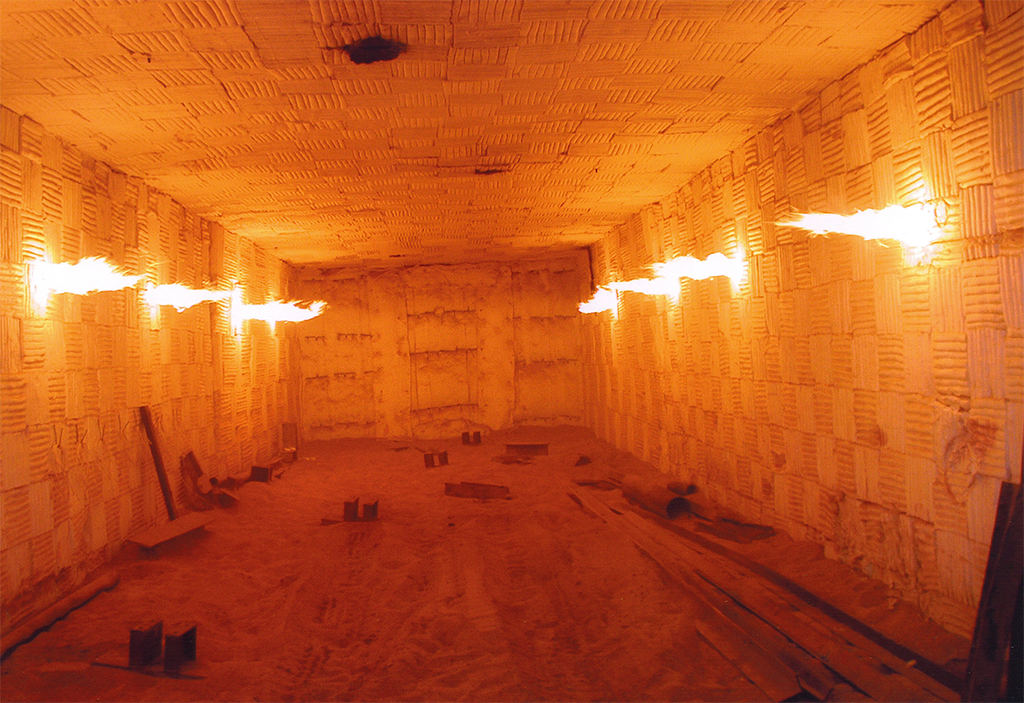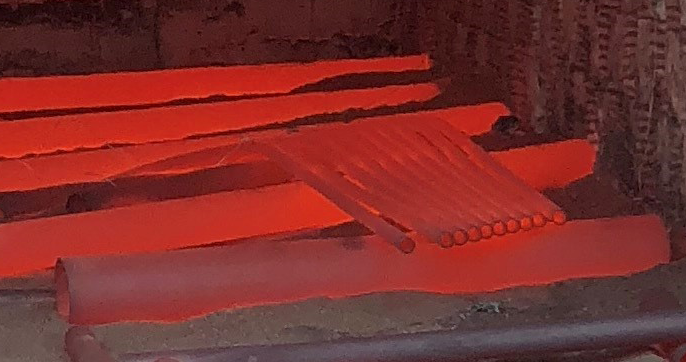Annealing furnaces
Antwerp Welding Supply nv has 3 stationary furnaces for heat treatment of metals of all sizes at our location in the port of Antwerp.
Antwerp Welding Supply can assist you with different types of heat treatments for your metal workpieces. These treatments can consist of soft annealing, normal annealing / normalizing, tempering, finishing or hardening.
These annealing techniques are mainly applied after other machining processes, such as welding or forming, to improve the mechanical properties of the material.
Annealing furnaces
Annealing techniques in annaeling furnaces

The 3 annealing furnaces available for the treatment of your workpieces have the following properties:
- Furnace 1: 13500mm x 4500mm x 2700mm to max 950°C
- Furnace 2: 6000mm x 1800mm x 2000mm to max 950°C
- Furnace 3: 2500mm x 2500mm x 1600mm to max 950°C
All heat treatments within our annealing furnaces are planned and validated in consultation with the customer to meet the expected requirements.
Heat treatments
Our different heat treatments in annealing furnaces
Soft annealing
Soft annealing is a technique to improve the processing and deformation of metal. The metal is, as it were, made softer by this treatment.
Soft annealing has a negative impact on the tensile strength and hardness of the metal, but the flexibility of the metal increases and therefore makes it easier to work with.

Normal annealing
Normal annealing or normalizing ensures that the metal is returned to its original state as much as possible. All operations such as welding, grinding, etc. weaken the metal.
Thanks to this heat treatment, the material regains a finer structure, which improves the tensile strength and hardness of the workpiece. The tensions in the material that were caused by the processing are minimized again in this way.

Low stress annealing
This annealing technique is mainly applied to metals that have been worked or deformed in the cold state, such as folding or rolling the metal.
A heat treatment of the materials for 2 hours greatly reduces the internal stresses in the material caused by the cold working.

Hardening
The purpose of hardening steel is to strengthen the material and make it more wear-resistant.
With this treatment, the steel is heated to above 800°C and then cooled quickly by means of water or oil. However, this does increase the brittleness of the metal and any subsequent tempering treatment may be advised.

Tempering
Annealing or tempering of steel is usually performed after hardening the steel.
Annealing steel at lower temperatures around 200°C reduces the brittleness of steel, without hardly having an impact on the hardness and tensile strength of the metal.

Refining
The refining of steel involves 2 processes, namely hardening and tempering, but at a high temperature.
Both strength and toughness of the metal are favorably influenced by the refining process. In order to guarantee the tensile strength and toughness of the material, a high temperature is used during the tempering.

